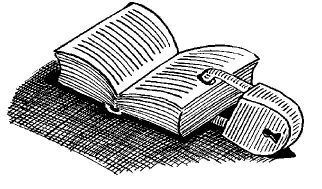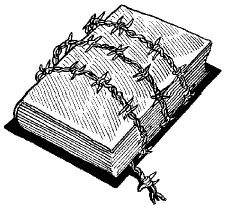The Book of Lost Books (39 page)


Thomas Edward Lawrence
{1888â1935}
THE MYTH OF T. E. Lawrence (“of Arabia”) frequently threatens to supplant the man. The gaunt good looks of Peter O'Toole playing Lawrence on film surreptitiously overwrite his actual jut of jaw. Lawrence could, in fact, imagine himself on celluloid, but only as a creation of Walt Disney. Versions and variations multiply: a mental patient was discovered impersonating him. He changes his name by deed poll after his own breakdown. One friend sees in him a mirror for all men; another thinks that the only hope for Britain is a pact between Lawrence and Hitler. One biographer describes him as evolving into “the Truly Strong Man”; another denounces him as an “impudent mythomaniac” and a closet homosexual prone to panic attacks. The image fabricated for him jostles with the image projected by him. He was an illegitimate child who nonetheless became, in his own words, “a sublimated Aladdin, the thousand and second knight.” He colluded in and distanced himself from his own persona. In
The Seven Pillars of Wisdom
he claims to have personally destroyed seventy-nine bridges during the Arabian revolt; in fact, he had blown up twenty-three.
Given the manifold contradictions, evasions, self-aggrandizements, and mystifications of his character, it is in keeping that the manuscript history of his most famous work,
The Seven Pillars of Wisdom,
is also tainted by these traits. Lawrence may have helped liberate the Middle East from Turkish rule, but he aspired to being a small publisher of Modernist prose. The form as we have it was first published in 1922âthe Oxford Editionâwith a print run of six copies. A subscriber's edition, lavishly illustrated with avant-garde color plates, was issued in 1926, at the exorbitant price of thirty guineas. Lawrence was cagey about how many copies actually existed: 128 were sold to subscribers, and several other copies were given to friends. George Doran published twenty-two copies in the USA, with ten going on sale at $20,000 per volume. Although an abridged edition was available, there was no full edition for the general public until after Lawrence's death. Enigmatic as ever, Lawrence wrote a book he thought the equivalent of
War and Peace
or
Moby-Dick,
but attempted to control its readingâunless, of course, it was a superbly managed promotional campaign.
Lawrence's account of the part he played in the Arab Revolt between 1916 and 1918 began its existence as a travel book. According to Robert Graves, Lawrence started a book in 1910 about the Crusaders and Cairo, Smyrna, Constantinople, Beirut, Aleppo, Damascus, and Medina, but destroyed the manuscript. All that remained was the title, reused for his wartime memoirs. Lawrence also burned the second manuscript version of this work, a version he referred to as the “original-and-to-be-kept secret,” while rewriting the text that was eventually published. This problematic approach to authorship continued after
The Seven Pillars of
Wisdom
finally appeared; in his study of RAF life,
The Mint,
written under the pseudonym 352087 A/c Ross, Lawrence's dedication to Edward Garnett reads: “You dreamed I came one night with this book crying, âIt's a masterpiece. Burn it.' Well
âas you please.
”
The first draft disappeared in Reading station. Lawrence was traveling from London to Oxford in the autumn of 1919, and stopped in the refreshment room, with the manuscript in a black banker's bag, which he put under the table. Although he claimed the bag was stolen, he also confided to another biographer, Liddell Hart, that perhaps he
involuntarily
allowed it to be lost. The subsequent versions were “shorter, snap-pier and more truthful”; but, given his propensity for tweaking and finessing the truth, even that statement cannot be taken as definitive.
Take, for example, the infamous Der'a incident. In the Oxford Edition, Lawrence clearly, though subtly, refers to some kind of sexual molestation when he was captured by a Turkish bey. Despite graphically described torture, he nonetheless escapes and is back in active service remarkably quickly. One letter has been widely interpreted as hinting at a certain willing submission, despite the assertion in the same epistle that Lawrence even found that writing about what happened made him sick. Legions of biographers must have dreamed that the manuscript lost at Reading made clear not only what had happened, but what Lawrence felt about it. That such a traumatic event could be immediately and unambiguously poured into words seems psychologically implausible.
What is certain is that if the first draft was stolen, then the lightfingered culprit had a bag of papers more valuable than banknotes or bullion, had he or she the patience to allow the contents to maximize their value. With copies of the printed version changing hands at auction for between £20,000 and £30,000, and individual autograph letters reaching as much as £2,000, a nearly complete first draft would be an exceptionally precious commodityâindeed, most auction houses would only venture a whistle and repeat the word “thousands” a few times. The price of Lawrence's private pain increases exponentially, as collectors and biographers alike conspire in the idea that behind the array of self-made and imposed icons, there must be a confession with the aura of incontrovertible truth.

Bruno Schulz
{1892â1942}
I am simply calling it The Book without any epithets or qualifications, and in this vast sobriety there is a shade of helplessness, a silent capitulation before the vastness of the transcendental, for no word, no allusion, can adequately suggest the shiver of fear, the presentiment of a thing without name that exceeds all our capacity for wonder.
SO BEGINS “THE BOOK,” the first piece in Bruno Schulz's second collection,
Sanatorium Under the Sign of the Hourglass.
Like its predecessor,
Cinnamon Shops
(in English, retitled
The Street of Crocodiles
), it is a series of linked short stories, where the Galician town of Drohobycz is transmogrified and metamorphosed through the eyes of the narrator, Joseph N. The Book in “The Book” was an epiphanic volume glimpsed in childhood: his father would later attempt to pass off the Bible as the Book; another character maintains they have been using its pages to wrap up sandwiches and butcher's meat. Recapturing the vision of this lost book is a subterranean motif in Schulz. It also, tragically, mirrors the fate of his own work.
Bruno Schulz was a quiet, frightened man, who taught drawing at the King WÅadysÅaw JagieÅÅo State Gymnasium in his beloved Drohobycz. His graphics, depicting grotesque, squat menâweird hybrids of Chagall and the Golemâand impossibly elegant women, were gradually earning acclaim, though barely replacing his income. He was also, along with his friend WÅadysÅaw Riff, experimenting with prose. When Riff died in 1927, Schulz lost a creative spur as well as a trusted friend: it would take him six years to present his stories to a publisher. Riff died of tuberculosis, and the sanitary officers who disinfected his lodgings, through fear of an epidemic, or in sheer carelessness, burned all of Riff's manuscripts, and his letters from Schulz. He was, at one time, engaged to be married to Józefina Szelin ska, whom he helped to translate Kafka's
ska, whom he helped to translate Kafka's
The Trial
into Polish: his name was erroneously substituted for hers on the title page.
Drohobycz was the universe for Schulz. It was itself and a kabbalistic symbol for everywhere; not a microcosm so much as a metaphor. Although he spent one vacation in Paris, he scurried, like an inverted smolt, back to the village, in that piece of Poland that had become Austrian Galicia and would soon careen between Germany and the Soviet Union. It is today part of Ukraine.
Schulz knew he had to leave. He hoped, no doubt, that he would return. And he made sure his manuscripts were safe. Zbigniew Moron , a friend of Schulz, remembered his saying he had left his work with “someone else whom I did not know, he told me the name, but unfortunately I completely forgot it.” To Izydor Friedman, with whom he was sorting a hoard of looted books for the local Gestapo officer, Felix Landau, Schulz confided that a “Catholic from outside of the ghetto” had his papers for safekeeping.
, a friend of Schulz, remembered his saying he had left his work with “someone else whom I did not know, he told me the name, but unfortunately I completely forgot it.” To Izydor Friedman, with whom he was sorting a hoard of looted books for the local Gestapo officer, Felix Landau, Schulz confided that a “Catholic from outside of the ghetto” had his papers for safekeeping.
As early as 1934, Schulz had mentioned a novel in progress, entitled
Messiah.
The work was painstaking, and frequently deferred, or laid aside: sometimes he was silent about it, other times he merely said he was stalled. Those who heard him read sections claim it began with Joseph N being woken by his mother, who tells him, excitedly, that the Messiah has been seen in a village only thirty kilometers from Drohobycz. No one knew much more than that. In a letter Schulz described the book as a “regression” to a time of “fullness and limitlessness . . . My ideal is âto mature' into childhood.” As he worked on
Messiah,
the past must have seemed increasingly Edenic.
He was planning to leave the day he was shot. Fake travel documents and Aryan identity papers had been obtained through sympathetic friends. He had survived the German occupation since he was the protégé of Felix Landau, for whom he painted his children's nursery, catalogued his looted books, and even produced a portrait. Landau was not, however, some SS Schindler. He had murdered the Jewish barber who had been designated as a “necessary Jewish worker” for the neighboring Gestapo chief, Karl Günther. Günther, in return, killed Schulz, and later boasted to Landau, “You killed my JewâI killed yours.”
In 1987, the Polish poet and renowned Schulz scholar Jerzy Ficowski was telephoned by a man who announced himself as the illegitimate son of Bruno Schulz's elder brother, Izydor. Alex Schulz had been contacted in California by a New Yorker who claimed to be from Lwów, near Drohobycz. This unnamed individual had seen a package, weighing approximately two kilograms, containing eight drawings, the rest being made up of manuscript pages written in Polish. Two kilograms is approximately 1,500 printed paperback pages. It was, he said, by Bruno Schulz, and worth, he presumed, $10,000.
Time passed. Alex Schulz contacted Ficowski to say their mysterious seller had been in touch again, then went silent. Ficowski later learned that Alex had suffered a cerebral hemorrhage. He never passed on the name of his contact. Had that been the end of the story, one would be forgiven for thinking that a tragic accident had curtailed an unseemly plot to con a professor and a relative.
But in 1990, the Swedish ambassador to Poland, Jean Christophe Ãberg, contacted Ficowski. At a diplomatic meeting, a Soviet civil servant had let him know that a packet of papers had been found, misshelved, in the KGB archives relating to the Gestapo. The top sheet announced the novel
Messiah.
The USSR was in the last throes of collapse. Visas were denied, for duplicitous and then paranoid reasons. Ãberg died of cancer. His discreet lips had never passed on the name of the source in the archive. The Soviet Union fragmented. This particular
Messiah
's first coming is hopefully still in the pending tray of a minor bureaucrat in a former superpower.
